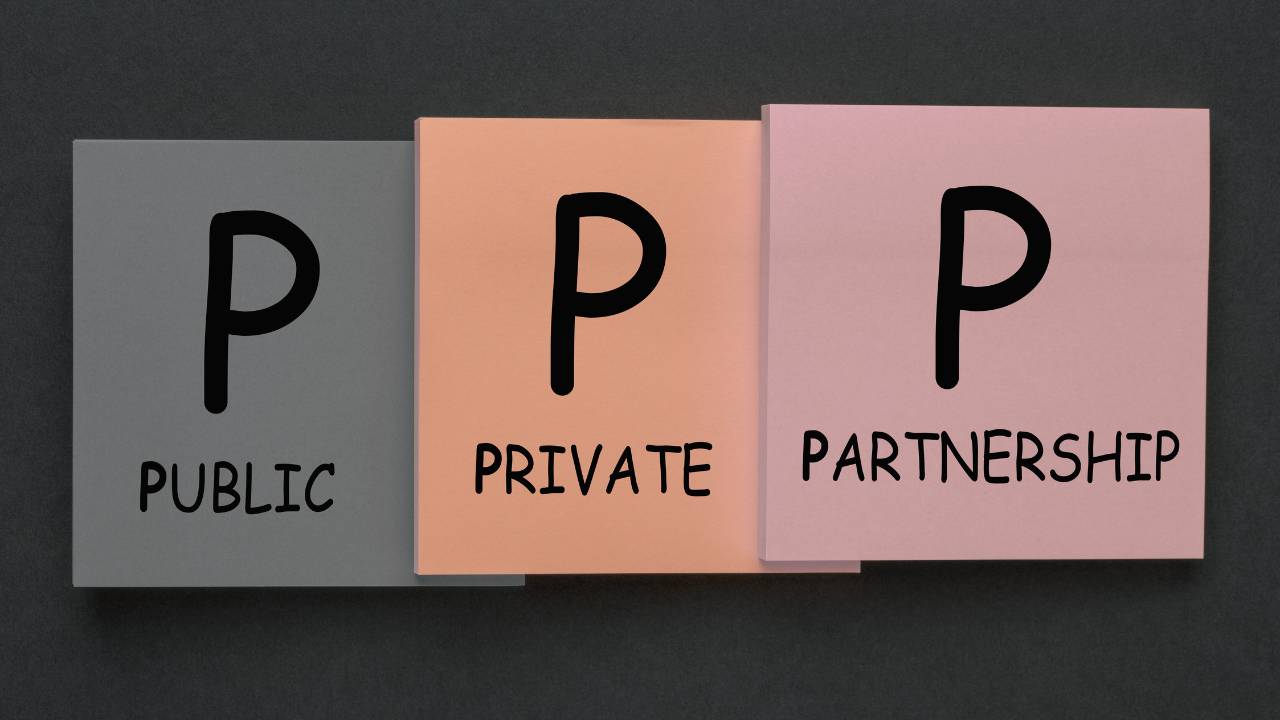Urban redevelopment isn’t just about buildings—it’s about people, communities, and economic opportunity. Across South Africa, cities and towns are grappling with ageing infrastructure, spatial inequality, housing backlogs, and rising urban migration. However, one tool is proving effective in helping local governments tackle these challenges head-on: public-private partnerships (PPPs).
When done right, PPPs offer more than just funding—they bring innovation, efficiency, and shared accountability to the complex process of urban transformation. But how exactly do they work? What are the risks? And why are they especially relevant in the South African context?
Let’s unpack the role of public-private partnerships in urban redevelopment, and how they are shaping the future of South African cities.
🏗️ What Are Public-Private Partnerships (PPPs)?
At its core, a public-private partnership is a collaborative agreement between a government entity and a private sector company to finance, build, and sometimes operate infrastructure or services. This could include housing developments, transport systems, parks, utilities, or precinct upgrades.
In urban redevelopment, PPPs can:
-
Bring in private investment to fund large-scale projects.
-
Introduce technical expertise from the private sector.
-
Spread risk between government and investors.
-
Deliver services more efficiently.
-
Support long-term urban planning goals.
In South Africa, PPPs are governed by Treasury Regulations under the Public Finance Management Act (PFMA) and Municipal Finance Management Act (MFMA).
🇿🇦 Why PPPs Matter in the South African Urban Context
South Africa’s urban areas are shaped by decades of apartheid spatial planning, leading to deeply unequal and fragmented cities. Redeveloping these spaces to be inclusive, sustainable, and economically viable requires massive investment, innovation, and coordination.
Challenges include:
-
Budget constraints at the municipal level
-
Inefficiencies in government service delivery
-
Backlogs in basic infrastructure and housing
-
Disjointed urban planning and enforcement
-
Safety and maintenance of public spaces
PPPs help bridge these gaps. When municipalities partner with the private sector in a transparent, accountable way, they can unlock dormant land, revitalise inner cities, and improve the quality of life for residents.
🛠️ Types of Urban Redevelopment Projects Using PPPs
Here’s how PPPs are actively reshaping South African cities:
1. Affordable Housing Development
Private developers provide funding, design, and construction while the government offers land, zoning approvals, or subsidies (like the Social Housing Regulatory Authority – SHRA).
Example: Johannesburg’s Fleurhof development – a 40,000-unit mixed-income residential project, driven by partnerships between the government and Calgro M3.
2. Inner City Revitalisation
PPPs can help convert underutilised or derelict buildings into residential or commercial spaces, boosting safety, foot traffic, and tax revenue.
Example: The City of Tshwane’s PPP framework to redevelop vacant municipal buildings in Pretoria’s CBD into affordable student housing and retail space.
3. Transport and Mobility
Integrated public transport systems like the Bus Rapid Transit (BRT) networks in Joburg (Rea Vaya), Cape Town (MyCiTi), and Tshwane rely on PPPs for bus manufacturing, operations, and station construction.
4. Public Spaces and Precinct Development
The creation or revitalisation of parks, markets, and waterfront areas often includes private co-funding, design, and maintenance.
Example: Cape Town’s V&A Waterfront is a classic case of a successful long-term PPP, attracting tourism, retail, and leisure while maintaining public access.
5. Smart Cities and Infrastructure
New developments like Lanseria Smart City (Gauteng) aim to incorporate green building, ICT, and mobility innovations through partnerships between developers, tech firms, and municipalities.
🤝 How Do PPPs Work in Practice?
PPPs are typically structured using one of the following models:
• Design-Build (DB)
The private partner designs and builds the infrastructure, which the public sector owns and operates.
• Build-Operate-Transfer (BOT)
The private party builds and operates the facility for a set period before transferring ownership back to the public authority.
• Lease-Develop-Operate (LDO)
The private party leases public land or buildings, develops the space, and operates it under conditions set in the agreement.
Each model requires feasibility studies, stakeholder consultation, transparent tender processes, and performance monitoring.
⚖️ Key Legal Frameworks in South Africa
To ensure accountability and public value, PPPs in South Africa are regulated by:
-
The PFMA (Public Finance Management Act) – for national and provincial government PPPs
-
The MFMA (Municipal Finance Management Act) – for local municipalities
-
PPP Guidelines from National Treasury – for project appraisal, procurement, and implementation
Municipalities must conduct value-for-money assessments, risk transfers, and stakeholder engagement before launching a PPP.
💡 Benefits of PPPs in Urban Redevelopment
Here’s why PPPs are attractive for municipalities and developers alike:
✅ Shared Risk
The private sector assumes some of the financial, construction, and operational risks, reducing the burden on public finances.
✅ Access to Capital
PPPs enable cash-strapped municipalities to undertake large-scale projects without raising public debt.
✅ Innovation and Efficiency
Private partners often bring modern building techniques, smart technologies, and lean project management.
✅ Local Economic Development
By including local contractors, artisans, and suppliers, PPPs boost job creation and enterprise development.
✅ Long-Term Sustainability
PPP contracts often include clauses for ongoing maintenance and upgrades, ensuring assets don’t fall into disrepair.
⚠️ Risks and Challenges to Watch Out For
While PPPs can be game-changers, they’re not silver bullets. Risks include:
❌ Poor Governance
Opaque tender processes or political interference can derail projects or lead to corruption.
❌ Unequal Power Dynamics
Private partners may prioritise profit over public interest, risking displacement or exclusion.
❌ Delays in Approval
PPPs can be legally and administratively complex, especially at the municipal level.
❌ Affordability Issues
Poorly structured PPPs may result in user fees or rental costs that exclude low-income communities.
📍 Real-World Examples in South Africa
1. Rea Vaya (Johannesburg)
Launched in 2009, this BRT system is operated by companies owned by former minibus taxi operators. It’s a great example of economic inclusion through PPPs.
2. V&A Waterfront (Cape Town)
A 30-year partnership that transformed a neglected port into one of Africa’s premier mixed-use developments. It combines public open space, heritage sites, retail, housing, and tourism.
3. Durban Point Waterfront
A long-term PPP aiming to revitalise one of the city’s oldest districts. Includes plans for housing, hotels, canals, and retail – with public access preserved.
🧩 Best Practices for Successful PPPs
✔️ 1. Start with Community Needs
Prioritise what locals need—not just what looks good on paper.
✔️ 2. Ensure Transparent Procurement
Open tenders, public scrutiny, and compliance with PFMA/MFMA build public trust.
✔️ 3. Build in Accountability
Use performance indicators and enforceable penalties for delays or subpar delivery.
✔️ 4. Promote Economic Inclusion
Include small contractors, women-owned businesses, and training programmes in contracts.
✔️ 5. Think Long-Term
Plan for operation and maintenance—don’t just build and abandon.
🙋 FAQs: PPPs in Urban Redevelopment
Q: Can PPPs be used in townships or rural areas?
A: Yes! With the right community partnerships and financing models, PPPs can unlock value in previously underserved areas.
Q: Are PPPs only for large cities?
A: No. Smaller municipalities like eMalahleni and Polokwane have used PPPs for water treatment, waste management, and commercial centres.
Q: Who monitors PPP performance?
A: The National Treasury, local audit committees, and municipal councils all have oversight roles. Contracts should also include independent performance monitoring.
🏁 Wrapping Up: Partnering for Progress
Urban redevelopment in South Africa is too big a task for the government to handle alone—and too important to leave to chance. Public-private partnerships, when properly designed and transparently managed, offer a powerful vehicle for turning urban decay into urban opportunity.
They bring in skills, capital, and creativity—but only work when they serve the people first.
👷♂️ Work With Mimiti
At Mimiti, we understand the complexities of town planning and urban redevelopment. Our team works alongside municipalities, developers, and community organisations to deliver projects that are both visionary and grounded.
If you’re considering a public-private partnership in your urban project, let us guide the process—from concept to completion.
📞 Ready to bring your urban vision to life? Reach out to Mimiti today.




0 Comments